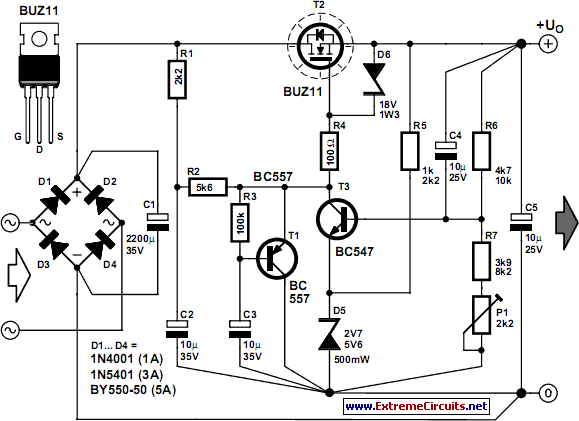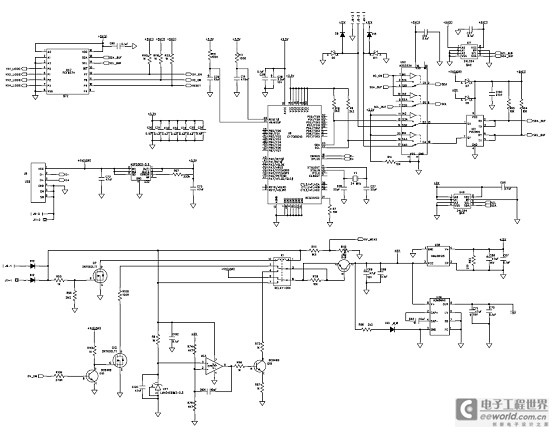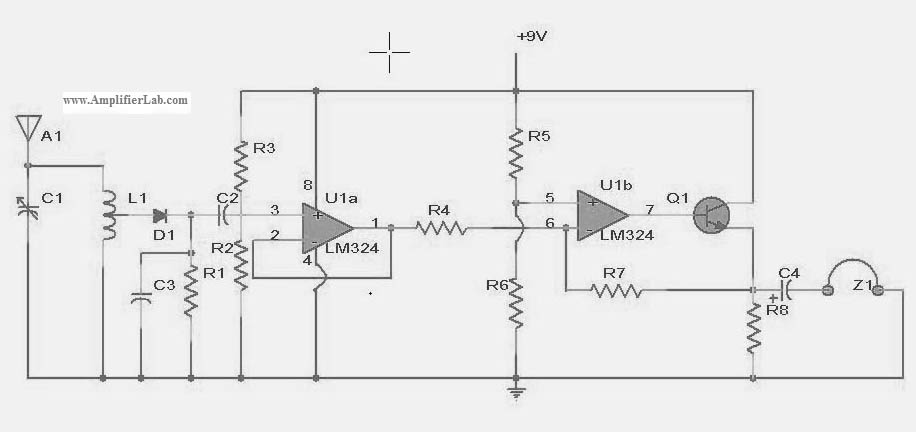
Power supply monitor

This circuit utilizes a tricolor LED display to signify acceptable and unacceptable output voltages. One LED indicates the upper voltage limit, while another indicates the lower voltage limit. When the monitored voltage exceeds the maximum set point, the LED display illuminates red. A yellow LED activates for voltages that fall below the minimum set point, and a green LED lights up for voltages that are within the acceptable range between the high and low settings. The circuit is powered by the voltage it monitors, eliminating the need for an additional power supply. Furthermore, the circuit can be adapted to monitor voltage differences between two power supplies. If the monitored voltages differ by more than a predetermined threshold, a visual or audible alarm alerts the operator. The circuit can also be modified for remote monitoring and the option to use a separate power supply.
The described circuit employs a tricolor LED display, which serves as a visual indicator for voltage levels in a monitored system. The circuit includes voltage reference points, typically set using potentiometers, to define the upper and lower voltage thresholds. These reference points are compared against the monitored voltage via a microcontroller or comparator circuit.
The green LED indicates normal operating conditions, lighting up when the monitored voltage is within the defined range. The red LED activates when the voltage exceeds the upper limit, signaling a critical condition that requires immediate attention. Conversely, the yellow LED serves as an alert for voltages that fall below the lower limit, indicating potential system failure or malfunction.
The circuit's design allows for flexibility in application; it can be configured to monitor voltage levels for a single power supply or to compare two different voltages. In the latter case, additional components such as differential amplifiers may be utilized to accurately measure the voltage difference. The alarm system can be implemented using simple buzzer circuits or more sophisticated sound modules, depending on the required alerting mechanism.
For remote monitoring capabilities, the circuit can incorporate wireless transmission modules, such as Wi-Fi or Bluetooth, enabling real-time feedback to an operator's device. This feature enhances system oversight, especially in industrial environments where immediate responses to voltage fluctuations are crucial.
Overall, the circuit's ability to operate without an external power supply, combined with its adaptability for various monitoring scenarios, makes it a versatile tool in electronic applications.This circuit uses a tricolor LED display to indicate acceptable and unacceptable output voltages. One to set the upper voltage limit, the other, the lower voltage limit. When the monitored voltage is above the set maximum, the LED display turns red. Yellow turns On for voltages below the set minimum, and green turns on for voltages between the high and the low settings. The circuit does not need a separate power supply. It is powered by the voltage it monitors. The circuit can be adapted to monitor voltage differences between two power supplies. Should the monitored voltages differ by more than a set value, a visual or an audible alarm would warn the operator about the difference. The circuit can also be modified for remote monitoring and the use of a separate power supply.
The described circuit employs a tricolor LED display, which serves as a visual indicator for voltage levels in a monitored system. The circuit includes voltage reference points, typically set using potentiometers, to define the upper and lower voltage thresholds. These reference points are compared against the monitored voltage via a microcontroller or comparator circuit.
The green LED indicates normal operating conditions, lighting up when the monitored voltage is within the defined range. The red LED activates when the voltage exceeds the upper limit, signaling a critical condition that requires immediate attention. Conversely, the yellow LED serves as an alert for voltages that fall below the lower limit, indicating potential system failure or malfunction.
The circuit's design allows for flexibility in application; it can be configured to monitor voltage levels for a single power supply or to compare two different voltages. In the latter case, additional components such as differential amplifiers may be utilized to accurately measure the voltage difference. The alarm system can be implemented using simple buzzer circuits or more sophisticated sound modules, depending on the required alerting mechanism.
For remote monitoring capabilities, the circuit can incorporate wireless transmission modules, such as Wi-Fi or Bluetooth, enabling real-time feedback to an operator's device. This feature enhances system oversight, especially in industrial environments where immediate responses to voltage fluctuations are crucial.
Overall, the circuit's ability to operate without an external power supply, combined with its adaptability for various monitoring scenarios, makes it a versatile tool in electronic applications.This circuit uses a tricolor LED display to indicate acceptable and unacceptable output voltages. One to set the upper voltage limit, the other, the lower voltage limit. When the monitored voltage is above the set maximum, the LED display turns red. Yellow turns On for voltages below the set minimum, and green turns on for voltages between the high and the low settings. The circuit does not need a separate power supply. It is powered by the voltage it monitors. The circuit can be adapted to monitor voltage differences between two power supplies. Should the monitored voltages differ by more than a set value, a visual or an audible alarm would warn the operator about the difference. The circuit can also be modified for remote monitoring and the use of a separate power supply.





